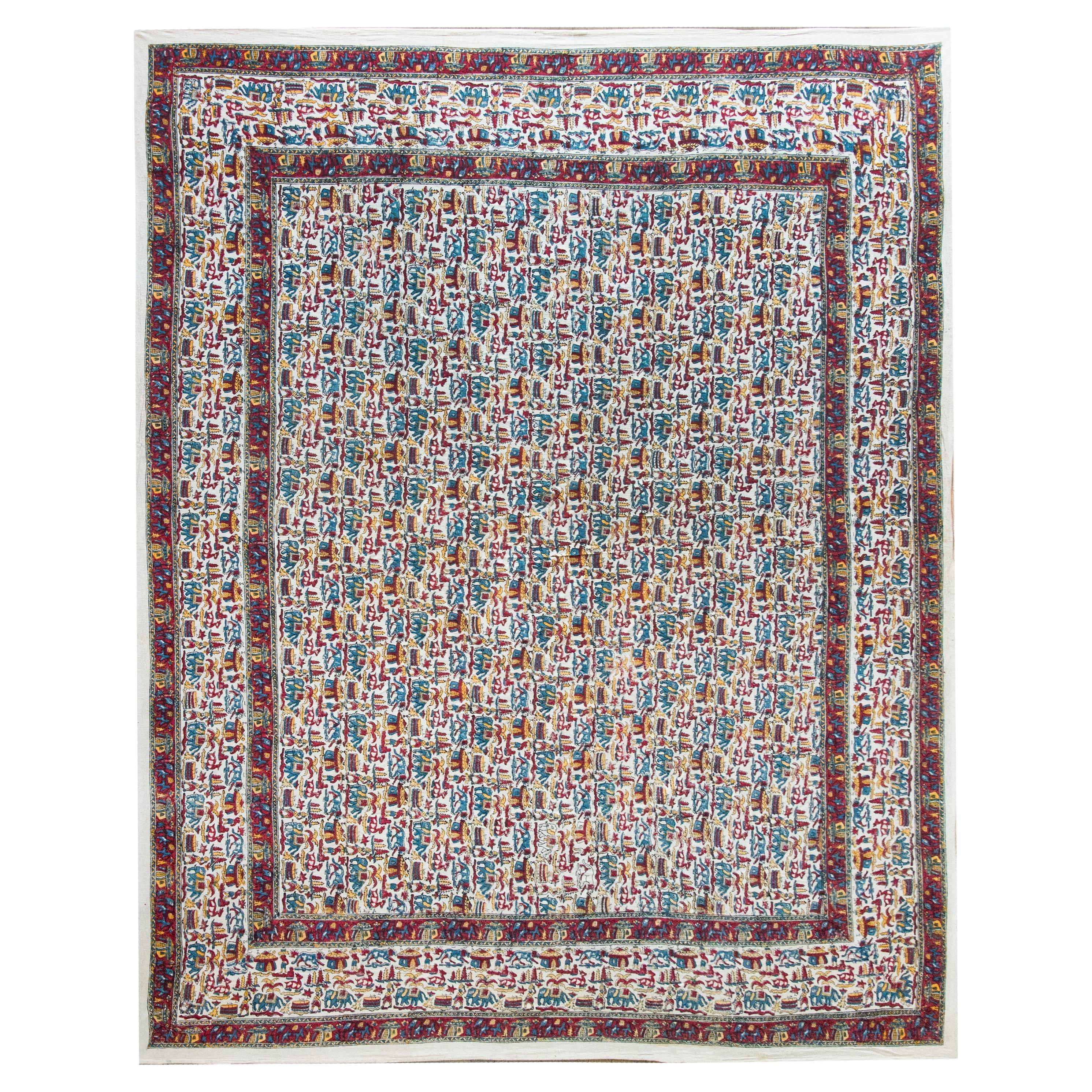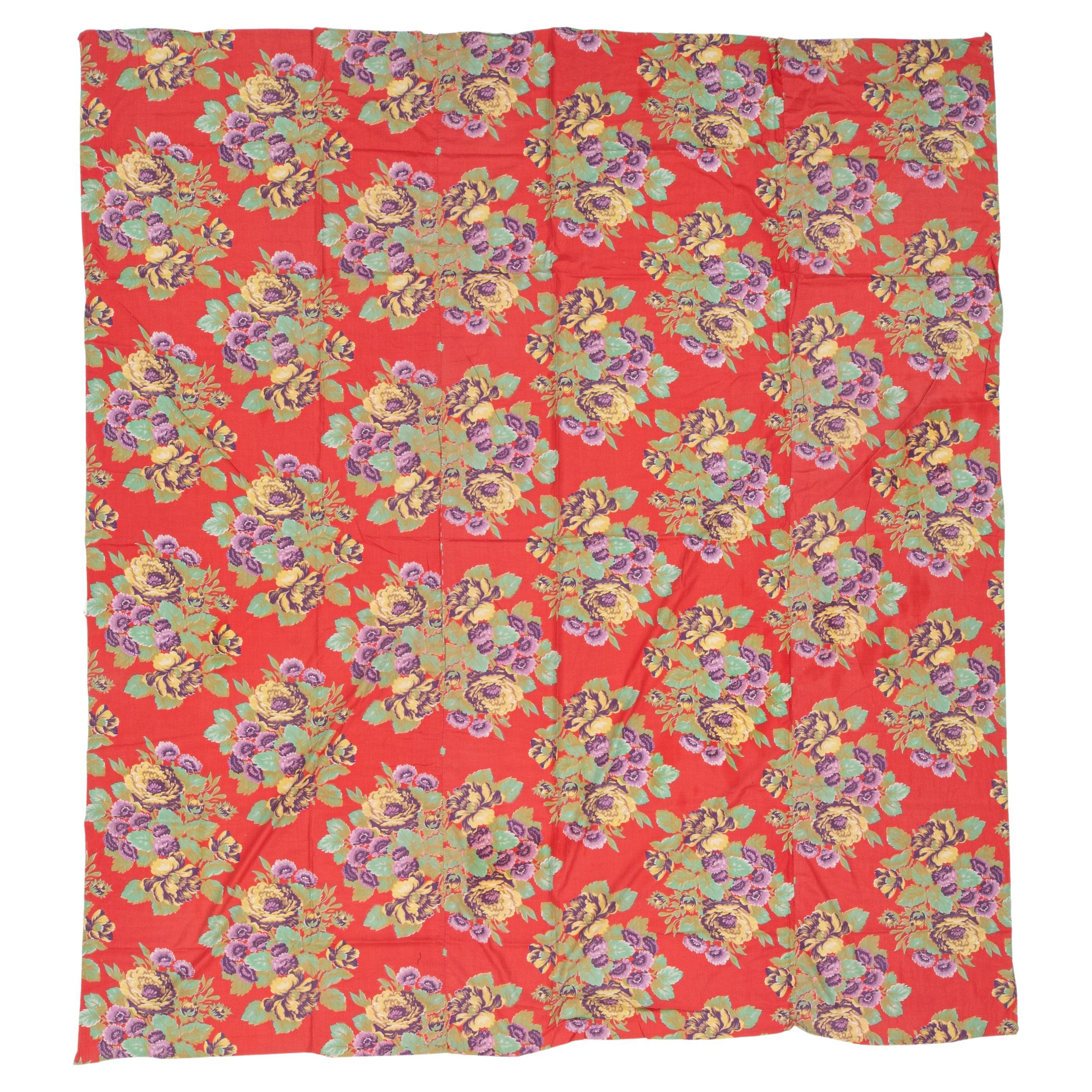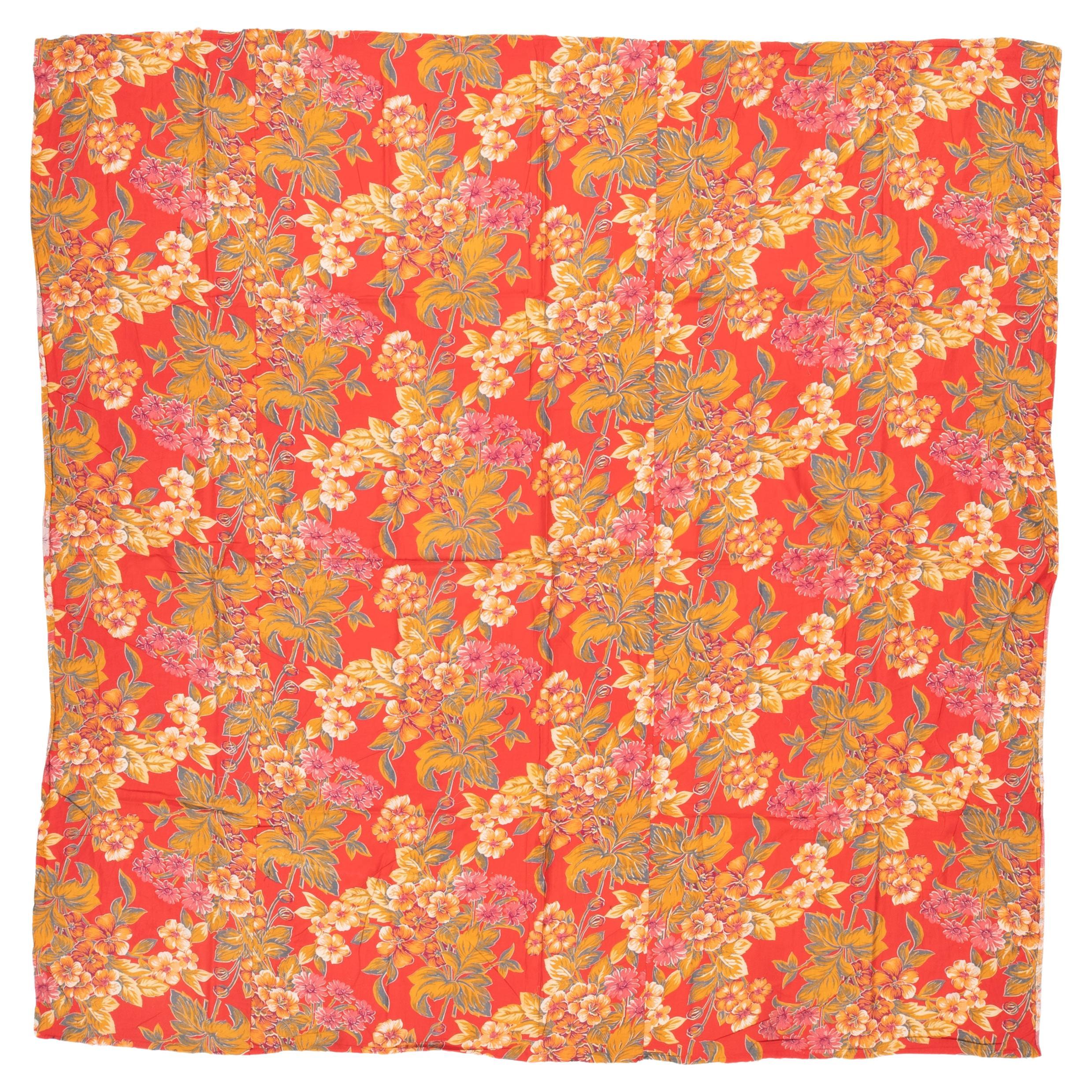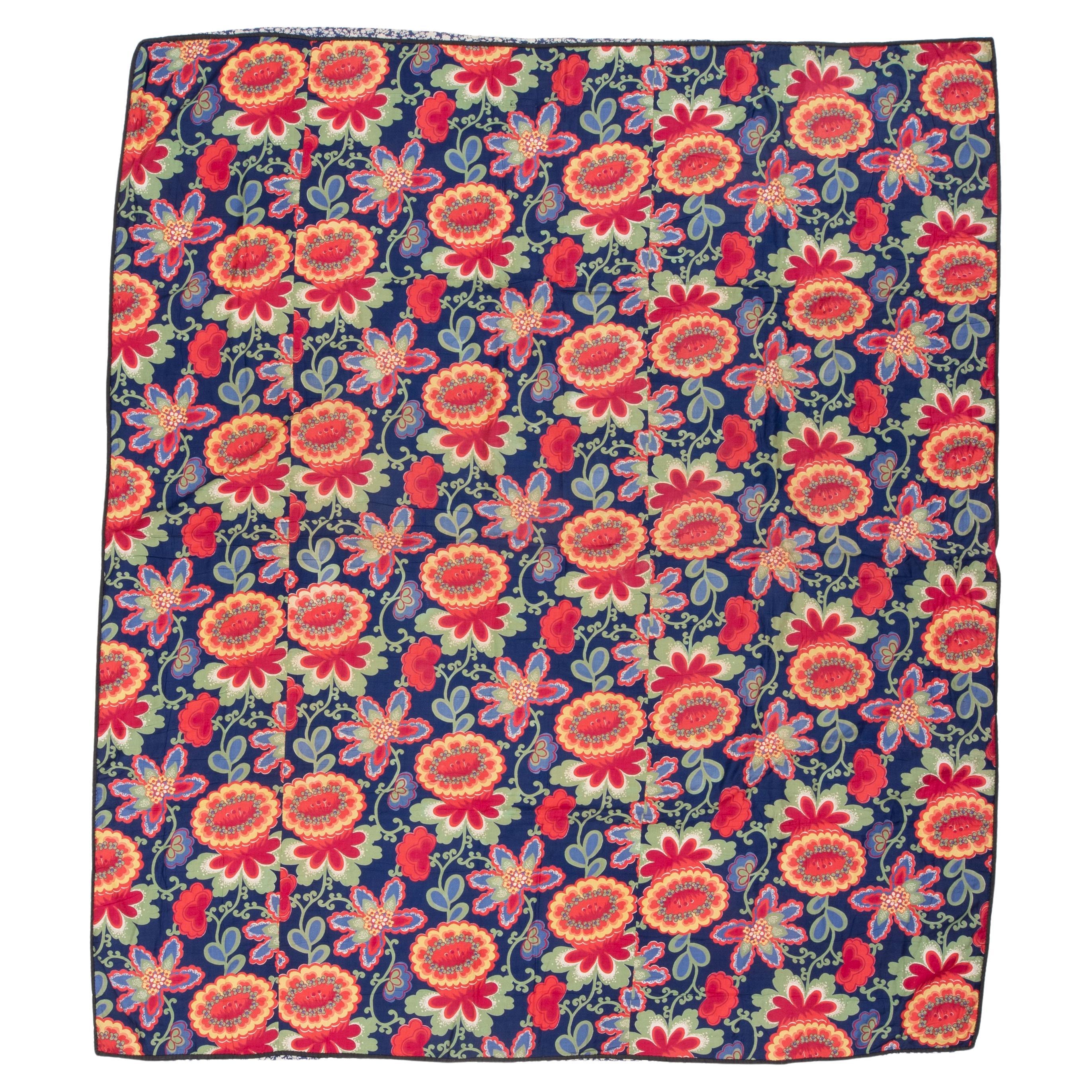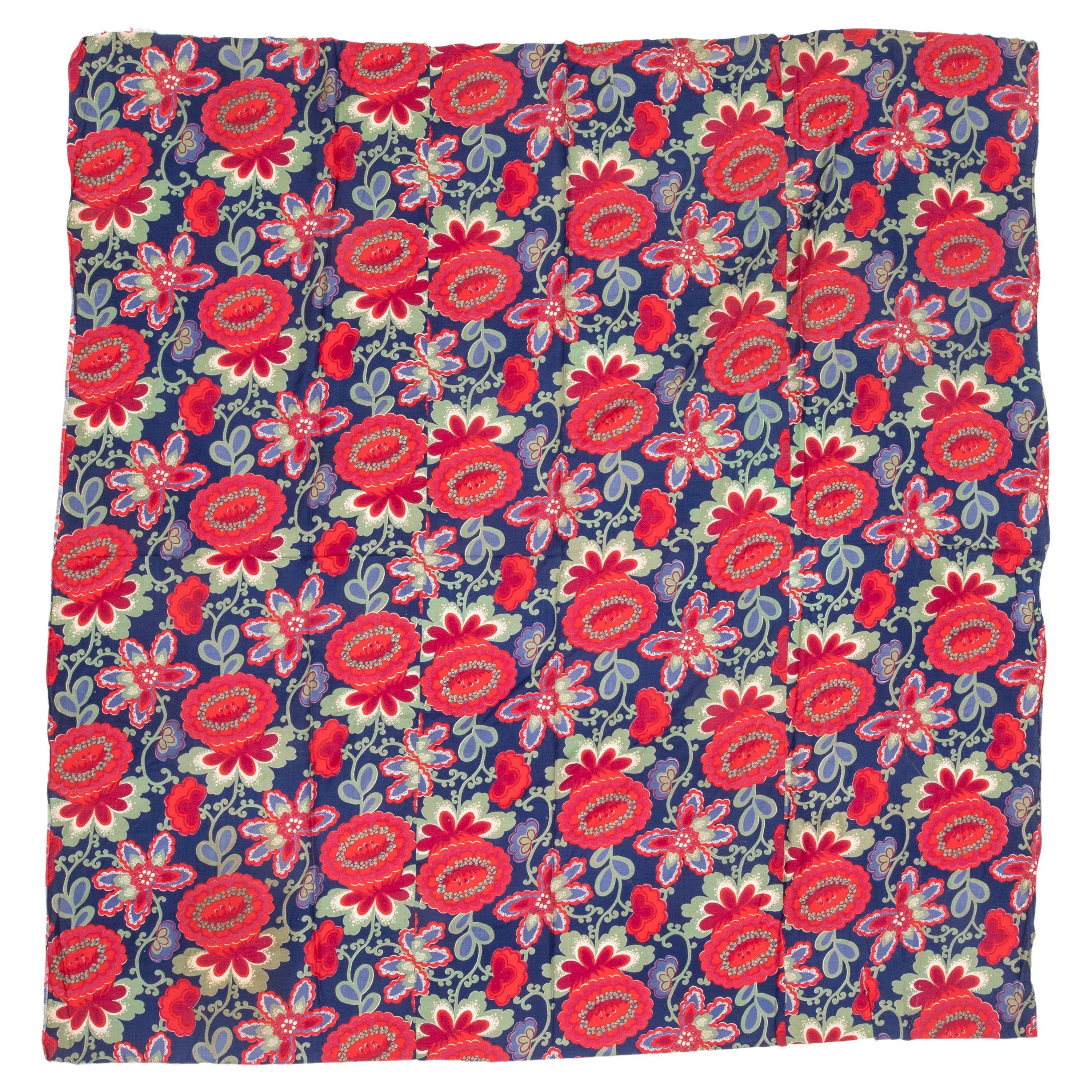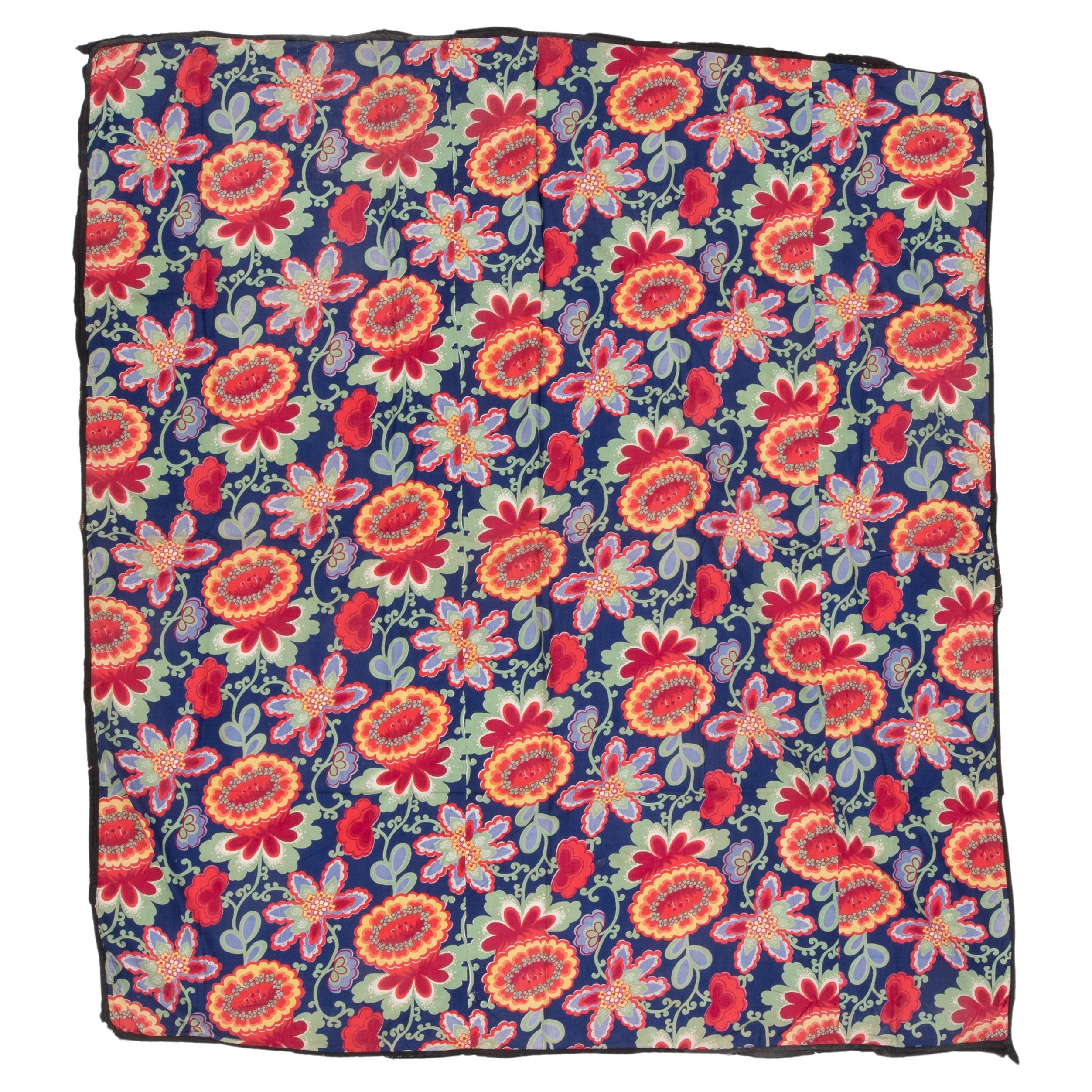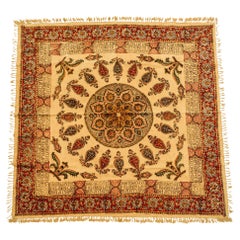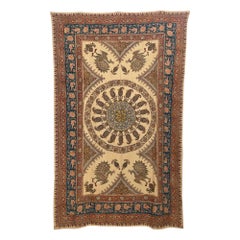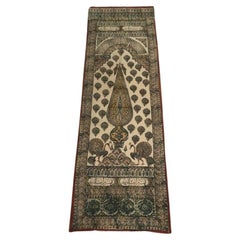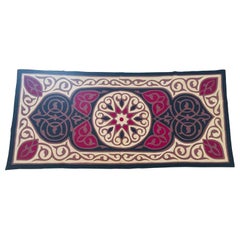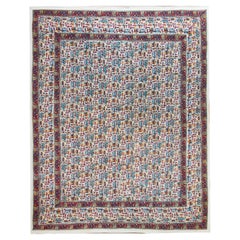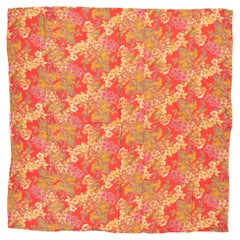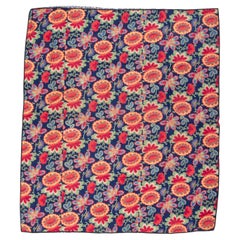Items Similar to Franciscan Fabrics San Francisco Hand Block Print Textile Fabric 1970s
Video Loading
Want more images or videos?
Request additional images or videos from the seller
1 of 15
Franciscan Fabrics San Francisco Hand Block Print Textile Fabric 1970s
$395
£301.53
€346.63
CA$555.84
A$618.11
CHF 324.65
MX$7,557.04
NOK 4,045.40
SEK 3,813.72
DKK 2,586.95
About the Item
Franciscan Fabrics Linen Collectable 1970-1979 Time Period Manufactured Interiors Fabric.
Franciscan Fabrics San Francisco hand block print upholstery fabric.
Such a beautiful rich & vibrant colored, warm, textured, but soft and drapeable, woven upholstery fabric.
This is a unique vintage collectible piece of linen textile manufactured in San Francisco California.
Colors consist of a pretty natural ivory cream light tannish colored background with a couple different shades of rust orange and blue flowers.
It's a sturdy drapery weight fabric, It's soft but yet definitely has the feel of a natural woven fabric.
Circa 1970s.
Sewn from both side for about 3 inches.
Dimensions: 55 inches wide x 92 inches.
- Dimensions:Height: 92 in (233.68 cm)Width: 55 in (139.7 cm)Depth: 0.05 in (1.27 mm)
- Style:Mid-Century Modern (In the Style Of)
- Materials and Techniques:
- Place of Origin:
- Period:
- Date of Manufacture:1970
- Condition:Wear consistent with age and use. good used vintage.
- Seller Location:Moreno Valley, CA
- Reference Number:Seller: FB12241stDibs: LU906842842102
About the Seller
5.0
Platinum Seller
Premium sellers with a 4.7+ rating and 24-hour response times
1stDibs seller since 2011
3,099 sales on 1stDibs
Typical response time: 1 hour
- ShippingRetrieving quote...Shipping from: Moreno Valley, CA
- Return Policy
Authenticity Guarantee
In the unlikely event there’s an issue with an item’s authenticity, contact us within 1 year for a full refund. DetailsMoney-Back Guarantee
If your item is not as described, is damaged in transit, or does not arrive, contact us within 7 days for a full refund. Details24-Hour Cancellation
You have a 24-hour grace period in which to reconsider your purchase, with no questions asked.Vetted Professional Sellers
Our world-class sellers must adhere to strict standards for service and quality, maintaining the integrity of our listings.Price-Match Guarantee
If you find that a seller listed the same item for a lower price elsewhere, we’ll match it.Trusted Global Delivery
Our best-in-class carrier network provides specialized shipping options worldwide, including custom delivery.More From This Seller
View AllIsfahan Ghalamkar Persian Paisley Textile Block Printed 1950s
Located in Moreno Valley, CA
Vintage large square Isfahan block printed cotton hand printed fabric bedspread or wall Hanging Textile or table cloth.
Isfahan Ghalamkar Persian Paisley Kalamkari textile hand block...
Category
Mid-20th Century Unknown Islamic Textiles
Materials
Fabric
Large Isfahan Ghalamkar Persian Paisley Textile Block Printed 1950s
Located in Moreno Valley, CA
Vintage large Isfahan block printed cotton hand printed fabric bedspread or wall Hanging Textile or table cloth.
Persian Paisley Kalamkari textile hand b...
Category
Mid-20th Century Asian Islamic Textiles
Materials
Cotton
Moorish Paisley Woodblock Printed Textile Wall Hanging
Located in Moreno Valley, CA
Antique Moorish Paisley Kalamkari textile from India.
Hand blocked vegetable and iron oxide dyes on cotton.
The cotton fabric is hand printed using patterned wooden stamps...
Category
Early 20th Century Indian Moorish Textiles
Materials
Fabric
Late 20th Century Vintage Middle Eastern Suzani Quilted Turkish Textile
Located in Moreno Valley, CA
Middle Eastern end of the bed quilted textile with appliqué, elegant Moorish design in black, deep red and beige.
Ideal to use as a tablecloth on a centre or console table, on the ba...
Category
Late 20th Century Turkish Folk Art Textiles
Materials
Fabric
$1,000 Sale Price
20% Off
Antique Victorian Paisley Throw Textile Cashmere Shawl 19th C.
Located in Moreno Valley, CA
Antique Hand-woven Kashmiri Paisley Throw Textile Shawl 1850-1890.
Late 19th Century European Victorian Kashmir Paisley Shawl.
Anglo Indian shawl...
Category
Antique Mid-19th Century English Victorian Textiles
Materials
Wool
African Batik Cloth Natural Hand-woven Hand-Printed Cotton Fabric Ghana 10 Yards
Located in Moreno Valley, CA
African Batik Cloth Natural Hand-woven Hand-Printed Cotton Fabric Ghana 10 yards.
Colors are organic earth tone beige and light brown in geometric design.
Non waxed fabric circa 1950s.
Hand made in Ghana Africa.
Museum Quality Original Long Piece.
380 inches, (30 ft 10 yards Long) x 46 inches Inches Wide( 4ft).
Could be use to make pillows or upholstery.
History of Batik in Africa:
Batik, a traditional fabric art technique, has a rich history in Ghana, West Africa. The practice of batik involves using wax to create intricate patterns on fabric, which is then dyed to achieve the desired design. While batik has its origins in Asia, particularly in Indonesia, it has been embraced and adapted by various African countries, including Ghana.
In Ghana, batik-making can be traced back to the mid-20th century when it gained popularity as a form of traditional textile art. The craft was introduced by artists and artisans who were inspired by the vibrant and expressive nature of batik. These early practitioners experimented with different designs, colors, and patterns, infusing local themes and motifs into their creations.
Over time, batik became an important part of Ghanaian culture and identity. It is not only used for clothing but also for various decorative and functional items such as wall hangings, tablecloths, and accessories. The art form often reflects the rich cultural heritage of Ghana, incorporating symbols, proverbs, and traditional stories into the designs.
Ghanaian batik artists often employ a combination of traditional and contemporary elements, creating a unique fusion of styles. The process of making batik involves applying hot wax to the fabric using various tools to create the desired patterns. The wax acts as a resist, preventing dye from penetrating the waxed areas. After dyeing, the wax is removed, revealing the intricate designs on the fabric.
Today, batik-making in Ghana continues to thrive as both a traditional craft and a form of artistic expression. Many artisans and designers draw inspiration from Ghana's diverse cultural landscape, incorporating elements from different regions and ethnic groups into their batik creations. The art form has also gained international recognition, with Ghanaian batik products being sought after both locally and abroad.
In summary, the history of batik in Ghana is a testament to the creativity and adaptability of artists who have embraced and transformed this traditional technique into a vibrant and culturally significant art form within the country.
HISTORY OF BATIK
In the mid-nineteenth century, the Belanda Hitam, or "Black Dutchmen," are said to have introduced batik to West Africa after serving as indentured soldiers for the Dutch in Indonesia. Returning from their conscriptions with trunks of fine Javanese batik, the opulent patterns captured the imagination of their friends and relatives. However, textile history is complex, and only a handful of recruits returned to West Africa with batik due to delayed payments.
Batik, with roots traced to Egyptian mummies, is a tradition found globally, from Southeast Asia to Japan and India. Europeans, particularly the Dutch, played a significant role in industrializing batik from the seventeenth century onward.
In West Africa, Dutch Scholar Ineke van Kessel suggests that batik arrived from India over trans-Saharan routes. Local populations, like the Yoruba in Nigeria, incorporated wax printing into their textiles. European traders brought wax and non-wax fabrics to West Africa in the seventeenth century, targeting a population ready for their consumption. European designers adapted prints for the African market...
Category
Mid-20th Century Ghanaian Folk Art Textiles
Materials
Cotton
You May Also Like
MId-20th Century Indian Block Printed Textile
Located in Chicago, IL
This charming mid-20th century Indian cotton textile bursts with retro personality, hand-woven and hand-block printed in a playful, folksy pattern of elephants, deer, lions, human fi...
Category
Mid-20th Century Indian Mid-Century Modern Tapestries
Materials
Cotton
Roller Printed Cotton Panel, Made for Central Asian Markets Mid 20th C. Russia
Located in Istanbul, TR
Russian roller-printed textiles from the mid-20th century held a distinctive place in the Central Asian market, embodying a vibrant fusion of artistic expression and utilitarian func...
Category
Mid-20th Century Russian Pillows and Throws
Materials
Cotton
Roller Printed Cotton Panel, Made for Central Asian Markets Mid 20th C. Russia
Located in Istanbul, TR
Russian roller-printed textiles from the mid-20th century held a distinctive place in the Central Asian market, embodying a vibrant fusion of artistic expression and utilitarian func...
Category
Mid-20th Century Pillows and Throws
Materials
Cotton
Roller Printed Cotton Panel, Made for Central Asian Markets Mid 20th C. Russia
Located in Istanbul, TR
Russian roller-printed textiles from the mid-20th century held a distinctive place in the Central Asian market, embodying a vibrant fusion of artistic expression and utilitarian func...
Category
Mid-20th Century Russian Pillows and Throws
Materials
Cotton
Roller Printed Cotton Panel, Made for Central Asian Markets Mid 20th C. Russia
Located in Istanbul, TR
Russian roller-printed textiles from the mid-20th century held a distinctive place in the Central Asian market, embodying a vibrant fusion of artistic expression and utilitarian func...
Category
Mid-20th Century Russian Pillows and Throws
Materials
Cotton
Roller Printed Cotton Panel, Made for Central Asian Markets Mid 20th C. Russia
Located in Istanbul, TR
Russian roller-printed textiles from the mid-20th century held a distinctive place in the Central Asian market, embodying a vibrant fusion of artistic expression and utilitarian func...
Category
Mid-20th Century Russian Pillows and Throws
Materials
Cotton
More Ways To Browse
Vintage Fabric Art
Mid Century Modern Textiles
Vintage Textile Art
Hand Printed Fabric
San Francisco Used Furniture
Woven Fabric Art
Midcentury Modern Textile Art
Upholstery Fabric Vintage Blue
Hand Block Print Fabric
Indonesian Batik
Embroidered Silk Robe
Kimono Meiji
Moroccan Kaftan Brocade
Antique Chinese Silk Robes
Antique Embroidered Persian Textiles
Ikat Indonesia
Indonesian Ikat
Vintage Silk Embroidered Fabric
